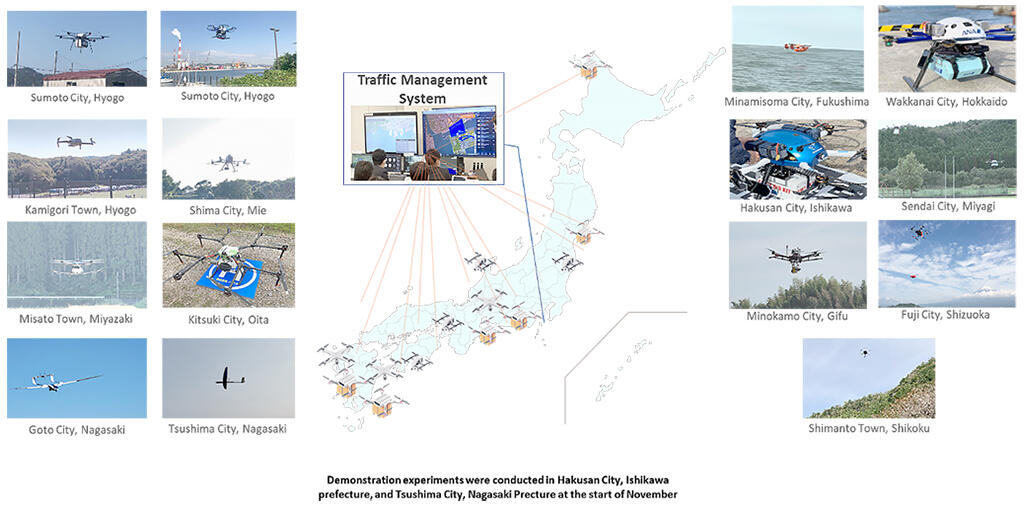The partial amendment of the Aviation Act, which allows unmanned aerial vehicles, such as drones, to fly out of sight (Level 4) in populated areas including urban areas will come into effect by December next year. In response to this, a demonstration experiment of a system that manages operations so that a large number of drones can fly safely without collision even if they fly simultaneously was conducted to realize the utilization of this by Level 4 flight. Consequently, the research group succeeded in the flight management of 52 drones in 13 regions nationwide from Hokkaido to Kyushu, which is the largest in Japan. This experiment was successfully conducted on October 27, 2021 by the New Energy and Industrial Technology Development Organization (NEDO), KDDI, and Persol Process & Technology (Persol P & T), under the title of "Project for an Energy Saving Society using Robots and Drones / Demonstration project of flight management system considering regional characteristics and expandability."
On November 24, the three organizations and the Ministry of Economy, Trade and Industry jointly held a press conference to announce the results of the demonstration experiment. The project is being promoted by NEDO in a five-year plan from FY2017 to FY2021. Moreover, NEDO outsources and subsidizes the project to the private sector using a grant from the national government (Ministry of Economy, Trade and Industry). The budget for FY2021 is 4 billion yen.
This demonstration experiment was conducted by KDDI and Persol P & T from FY2019 to FY2021 to demonstrate the flight management system developed in FY2020 in the actual environment. In March of last year, the group conducted a preliminary demonstration in which the flight status of a total of nine drones was collected by the flight management system in three regions: western Japan (Hyogo prefecture), eastern Japan (Miyagi prefecture), and a disaster prediction region (Mie prefecture). This year, the group added 10 regions that were selected through open recruitment to proceed with the demonstration project, which led to a successful outcome. In this demonstration experiment, it was confirmed that the flight management system can be operated nationwide in terms of both function and operation, and that flight management, such as collision avoidance, can be performed in airspace where multiple drones are flying. In addition, the group was able to verify the various needs of each region and how to utilize drones.

(Provided by NEDO and modified by Science Japan)
Based on the obtained results, the three organizations will proceed with the creation of guidelines for the social implementation of flight management systems and the establishment of sustainable business models. Through this, the group will promote the development of the industry and the creation of rules for problem solving and aim to realize a society in which drones fly safely in a Level 4 environment.
At the press conference, Satoshi Kawakami, Director of the Advanced Air Mobility Office, Ministry of Economy, Trade and Industry, proposed utilization of drones after Level 4 is achieved, explaining, "By achieving Level 4, it is expected that the utilization of drones will be expanded in various fields including logistics and inspection. To that end, it is necessary to develop this flight management system further." He explained that he is making a new request (3.8 billion yen) for the successor "realization project for the social implementation of next-generation mobility" in the budget for FY2022. In this five-year project, the research group will develop a method to evaluate appropriately and prove whether drones and flying cars have aircraft performance that meets safety standards and will develop and demonstrate a technology for flying multiple drones with one operator. In addition, the group will promote the development of technologies necessary for the high-density flight of flying cars and automatic/autonomous flight. Assuming that aircraft, drones, and flying cars will fly simultaneously, the group plans to design, develop, and demonstrate efficient airspace sharing for these flights.
This article has been translated by JST with permission from The Science News Ltd.(https://sci-news.co.jp/). Unauthorized reproduction of the article and photographs is prohibited.




